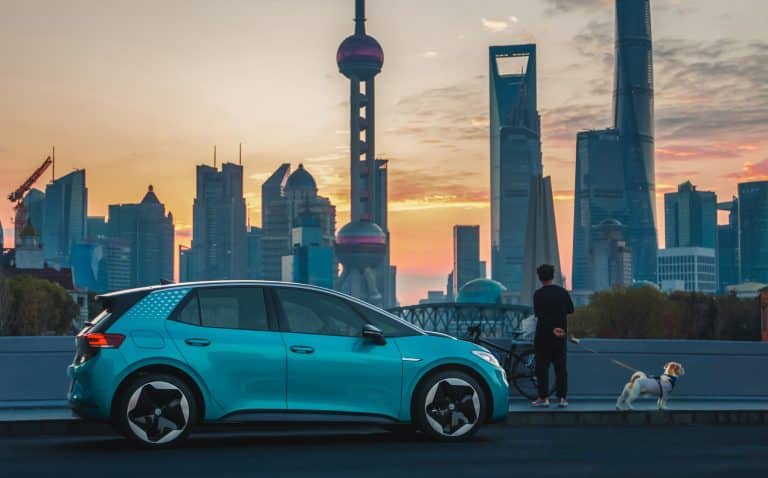Pranav Jaswani, Technology Analyst at IDTechEx highlights on the EV construction industry in China and the US

With the electric construction machine industry still so young, there is yet to be universal adoption of the technology worldwide, and some regions have been able to steal a march over others. While China may be the market leader in 2024, IDTechEx’s “Electric Vehicles in Construction 2024-2044: Technologies, Players, Forecasts” report predicts that the US will replace China as the world leader in unit sales by 2044.
Electric construction machine sales in the US and China, Source: IDTechEx
Why does China dominate the market?
China’s place as the leader in electrifying construction machines follows a long history of proactive electrification in a variety of heavy-duty mobility sectors. Chinese companies have plenty of experience in this area, as well as a well-developed battery manufacturing supply chain, both of which they have been able to bring into the construction space.
OEMs have been buoyed by policies and favorable economic conditions to develop new electric machines, which have seen success in the Chinese construction industry that has grown rapidly in the last decade. Cheap electricity prices have also meant that customers can charge their machines quite affordably.
Electric machines in China are now at a relatively advanced state. OEMs are largely turning away from developing electric mini-excavators or compact loaders and instead focusing on bigger machines – especially large excavators, wheel loaders, and mobile cranes. These are machines that are widely used in China and are the most emitting of all construction equipment, so it makes sense that OEMs have invested plenty of resources into their electrification.
IDTechEx’s analysis of over 200 unique construction machines shows that Chinese models are dominated by the use of LFP battery chemistry. LFP is the preferred chemistry in the Chinese mobility market, meaning OEMs likely have a better supply, but it is also more suitable for bigger construction machines. LFP batteries are cheaper on a per kWh basis, which means that the high-capacity batteries needed for large construction machines can be made more affordable. At the same time, LFP’s lower density/higher weight is not much of a concern for machines that are already heavy and often require additional ballast.
Unlike China, Europe and North America have generally preferred NMC chemistries in their construction machines.
NMC/LFP battery chemistry split in construction machines – for China, Europe, and North America. North America data is primarily from US OEMs. Source: IDTechEx
How is the landscape evolving?
Electric machines were quick to get off the ground in China, but the industry’s growth may not be so rapid in the future. For one, the larger electric machines being produced now will come at a more significant price premium than many smaller machines, which can drive potential customers away from purchase.
The Chinese construction market, in general, is also beginning to slow down, with machine sales in China declining significantly in 2023 for the first time since the COVID-19 pandemic. A lack of new government policies incentivizing EV development also means that Chinese OEMs may be less inclined to keep up the fast pace of progress.
Meanwhile, in the US, OEMs like Caterpillar and John Deere, which have been late to the electrification game, are beginning to embrace the industry’s transformation. Diesel is fairly cheap in the US, which favors the use of conventional diesel combustion machines. However, diesel prices will likely increase in the long term, and this will drive EV uptake.
Today’s US construction market is among the biggest in the world, not far from China’s market in terms of unit machine sales. The big difference between the two is the types of machines each uses. Where China uses plenty of large excavators and wheel loaders, nearly two-thirds of machines in the US weigh 6 tonnes or less. Smaller machines are far easier for OEMs to electrify and come at lower price premiums, which is ideal for the growth of the electric machine market.
What challenges lie ahead for the US?
The US market primarily uses NMC batteries, which are well-suited to the electrification of compact machines. NMC provides high energy density, which can offer greater runtimes within a small formfactor. The challenge with NMC comes in its higher cost per kWh, which impacts the economics of electrifying larger machines. If US OEMs begin to electrify large excavators and loaders using the same NMC technology, these machines could be too expensive for their target market and may struggle to see total cost of ownership benefits over a diesel equivalent.
Despite being tipped to lead in sales eventually, most electric machines in the US will be compact machines – mini-excavators and compact loaders. These bring in less revenue for OEMs, and IDTechEx expects the US market cap to still be smaller than in China as a result.
The new “Electric Vehicles in Construction 2024-2044: Technologies, Players, Forecasts” report from IDTechEx presents granular 20-year forecasts detailing the growth and evolution of the electric construction machine industry in the US, China, Europe, and rest of the world.












